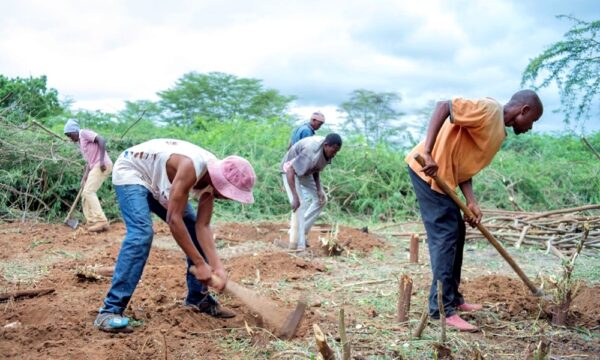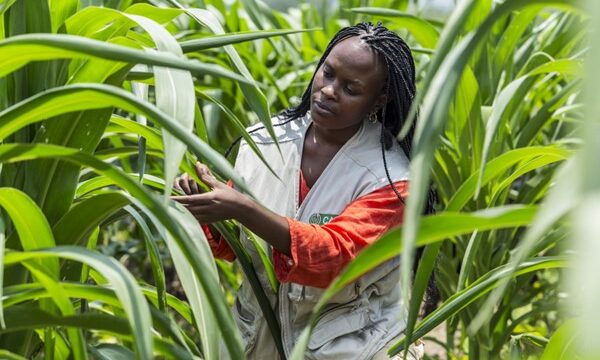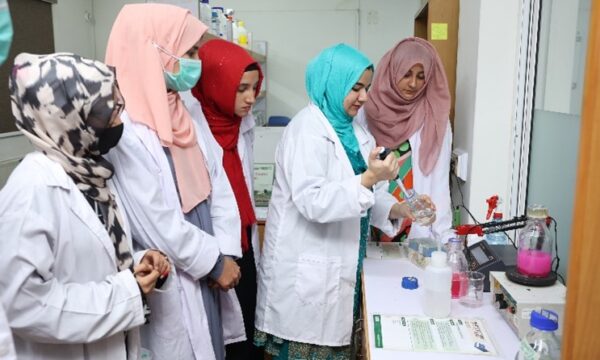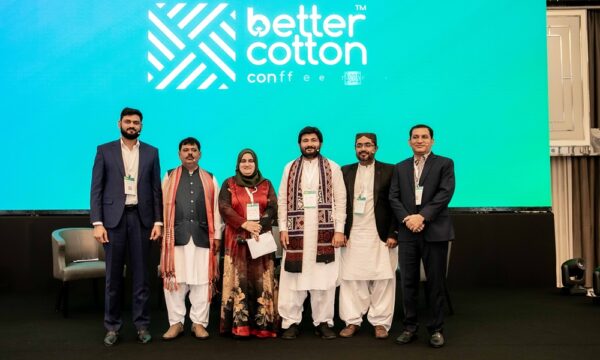
Under the Asian Development Bank (ADB)-funded project ‘Enhancing Technology-Based Agriculture and Marketing in Rural Punjab,’ staff from CABI’s centre in Pakistan have delivered a series of training sessions aimed at helping farmers reap better crops.
The sessions were conducted for farmers in district Sheikhupura pilot sites – and included demonstrations – on topics including checking of moisture content before harvesting, use of new model of harvesters for wheat and paddy harvesting and hermetic storage for grains.
Rapid adoption of advanced technologies
Ultimately, the aim of the ADB project is to facilitate the rapid adoption of advanced technologies to improve the productivity and profitability of the agriculture sector in Punjab Province, Pakistan.
Punjab alone contributes about 57% of the value of agricultural production in Pakistan and produces more than 70% of the country’s wheat and cotton, almost two-thirds of its sugarcane and around half of its maize.
The project seeks to help increase farmers’ access to such technologies in order to strengthen agriculture value chains in rural Punjab. It will also enable further development and adoption of advanced technologies to benefit the agriculture sector.
The support will, importantly, contribute to farmers’ higher income, improved livelihood in rural communities, increased food security, and sustainable agriculture growth of the province.
Checking of Moisture Content Before Harvesting
Checking the moisture content before harvesting is an essential step in ensuring the quality of rice and wheat crops. The ideal moisture content for harvesting rice is around 20-24%, while for wheat, it should be around 10-12%.
One of the most reliable methods of checking the moisture content is by using a moisture meter. A moisture meter is an electronic device that measures the moisture content of the grains by using electrical resistance.
It is a quick and easy way to determine the moisture content accurately. By using a moisture meter, farmers can estimate the harvesting date of the crop more precisely. If the moisture content is higher than the desired level, then the crop needs more time to mature before harvesting. In contrast, if the moisture content is lower than the desired level, the crop may be overripe, leading to a decrease in quality and yield.
Using a moisture meter helps farmers to optimize the harvesting time, reducing losses and increasing profits. Additionally, it ensures that the crop’s quality is maintained, preventing spoilage due to excess moisture content. Therefore, using a moisture meter is essential for farmers to determine the optimal harvesting date, leading to better crop yield and quality.
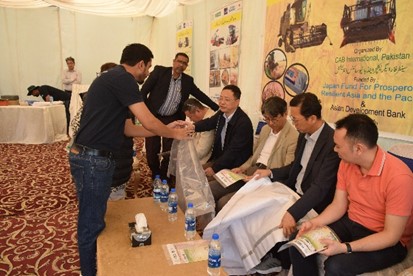
Use of New Model of Harvesters for Wheat and Paddy Harvesting
Harvesting is a crucial stage in the crop production process, and the use of appropriate harvesters can significantly impact crop quality and yield. Farmers in Punjab commonly use conventional combine harvesters for wheat and paddy.
These old models of combine harvesters have high harvesting losses. It is recommended that updated models of combine harvesters should be used for wheat crop while rice specific combine harvester, should be used for paddy crop.
CABI team selected TC 56 model of New Holland for wheat harvesting, ER 112 model of Kubota for paddy as half feed and Thinker X750 for full feed paddy harvesting.
The TC 56 model is a new harvester and it has several advanced features, including a flexible cutter bar that can adjust to the uneven terrain, wide bucket, double beater threshing drum and hydraulic gear system. TC 56 can harvest up to 25 acres of wheat per day, making it a popular choice among wheat farmers.
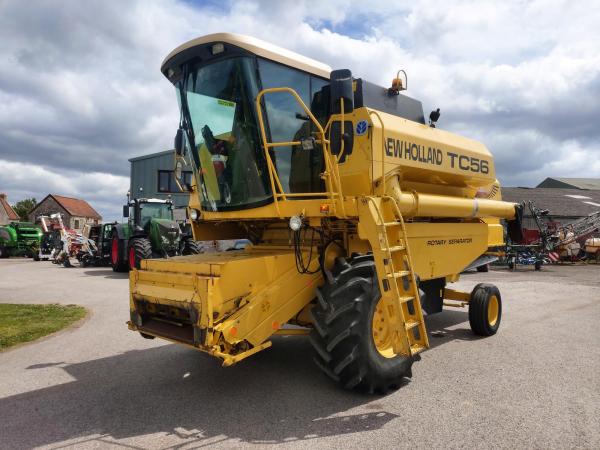
For paddy harvesting, it is recommended to use rice-specific harvesters such as the Kubota ER 112. This harvester is designed to harvest paddy crops efficiently, with minimal grain loss. It has features such as a rubber track system that ensures a smooth ride on the wet and muddy field and farmers get leftover straw in intact from that can be used later as animal fodder.
In case of crop lodging, which refers to the bending of the crop stems due to wind or heavy rain, Chinese Thinker X750 is used. It is a rice-specific harvester designed to harvest lodged crops. It is equipped with reel in front which can harvest lodged crop also with minimal losses.
Hermetic Storage for Grains
Hermetic bags are a type of storage bag that are designed to prevent air and moisture from entering or exiting. They are commonly used for grain storage because they can help to maintain the quality of the grain over an extended period of time.
When grains are stored in hermetic bags, the oxygen in the bag is quickly depleted, creating an environment that is unfavorable to insects and fungi that can spoil the grain. This means that the use of hermetic bags can reduce or eliminate the need for chemical pesticides and fumigation.
Hermetic bags are typically made from multilayer plastic or other materials that are impermeable to air and moisture. They are available in a range of sizes and can be used to store a variety of grains, including maize, rice, and wheat.
One important consideration when using hermetic bags for grain storage is to ensure that the bags are properly sealed. Any gaps or tears in the bag can allow air and moisture to enter, which can compromise the effectiveness of the hermetic seal. Additionally, it is important to monitor the grain regularly to ensure that there are no signs of spoilage or insect infestation.
Additional information
Main image: A delegation from the Asian Development Bank (ADB) observe the on-field training conducted by Agricultural Engineer Umair Ashraf from CABI’s centre in Pakistan (Credit: CABI).
Project page
Find out more about how CABI had facilitated the rapid adoption of advanced technologies to strengthen value chains and improved the productivity and profitability of agriculture in Punjab from project page here.
Other relevant story
‘Maize cob picker helps increase efficiency of harvests in rural Punjab, Pakistan.’
‘Pakistan’s maize farmers get to grips with mechanized technology aimed at improving productivity.’
Authors
Gohar Gulshan Mahmood – Agricultural Engineer
Dr Shakeel Ahmed – Coordinator, Development Communications and Extension
Related News & Blogs
Strengthening the potato value chain in the Kurdistan Region of Iraq
On 30th May, we marked the International Day of Potato. In this blog, CABI’s Crop Health Advisor Anna Wood provides an update on a five-year project led by CABI to strengthen the potato value chain in the Kurdistan Region of Iraq. An ambitious five-yea…
3 June 2025

